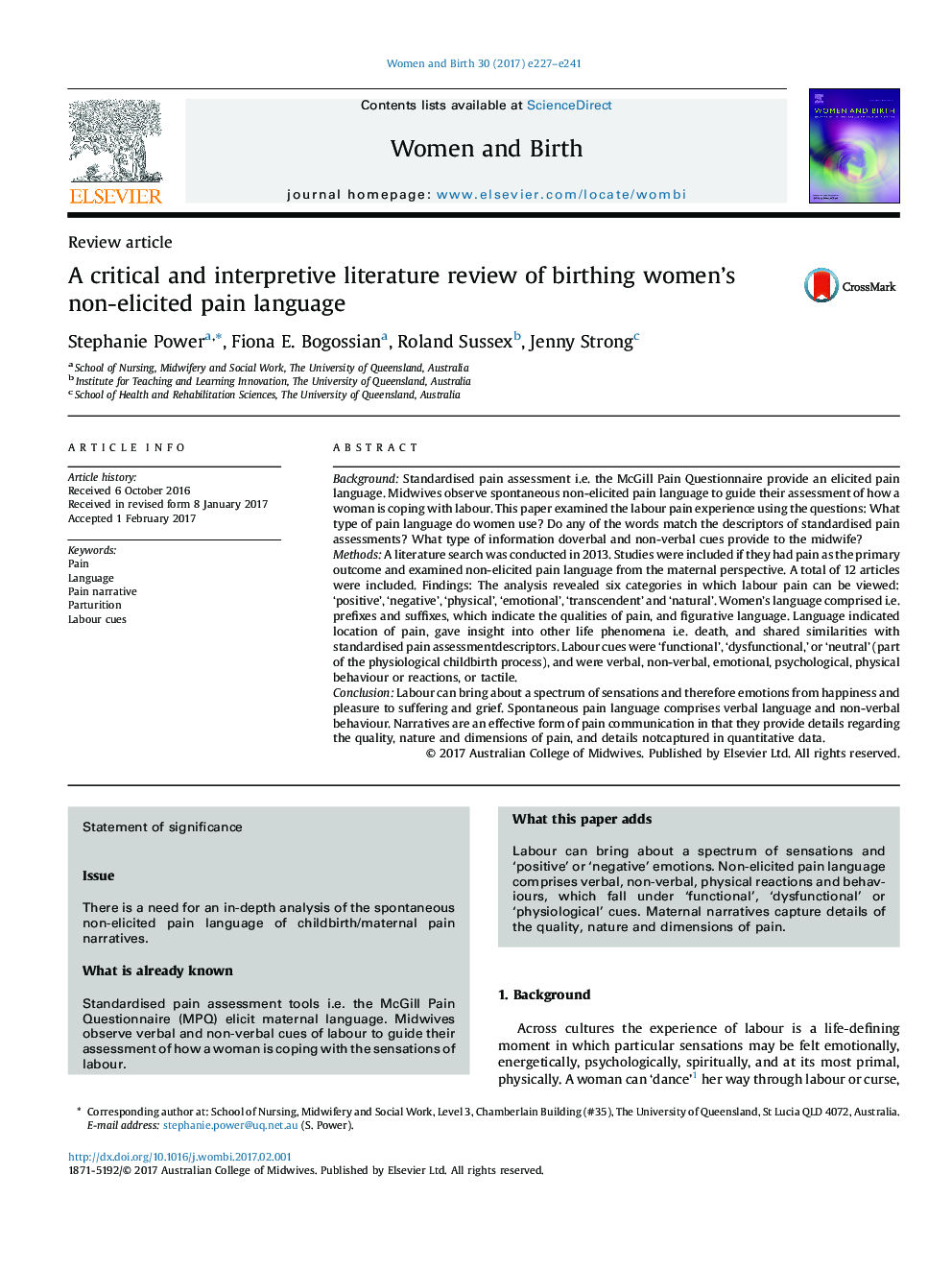| کد مقاله | کد نشریه | سال انتشار | مقاله انگلیسی | نسخه تمام متن |
|---|---|---|---|---|
| 5565975 | 1563317 | 2017 | 15 صفحه PDF | دانلود رایگان |
BackgroundStandardised pain assessment i.e. the McGill Pain Questionnaire provide an elicited pain language. Midwives observe spontaneous non-elicited pain language to guide their assessment of how a woman is coping with labour. This paper examined the labour pain experience using the questions: What type of pain language do women use? Do any of the words match the descriptors of standardised pain assessments? What type of information doverbal and non-verbal cues provide to the midwife?MethodsA literature search was conducted in 2013. Studies were included if they had pain as the primary outcome and examined non-elicited pain language from the maternal perspective. A total of 12 articles were included. Findings: The analysis revealed six categories in which labour pain can be viewed: 'positive', 'negative', 'physical', 'emotional', 'transcendent' and 'natural'. Women's language comprised i.e. prefixes and suffixes, which indicate the qualities of pain, and figurative language. Language indicated location of pain, gave insight into other life phenomena i.e. death, and shared similarities with standardised pain assessmentdescriptors. Labour cues were 'functional', 'dysfunctional,' or 'neutral' (part of the physiological childbirth process), and were verbal, non-verbal, emotional, psychological, physical behaviour or reactions, or tactile.ConclusionLabour can bring about a spectrum of sensations and therefore emotions from happiness and pleasure to suffering and grief. Spontaneous pain language comprises verbal language and non-verbal behaviour. Narratives are an effective form of pain communication in that they provide details regarding the quality, nature and dimensions of pain, and details notcaptured in quantitative data.
Journal: Women and Birth - Volume 30, Issue 5, October 2017, Pages e227-e241
